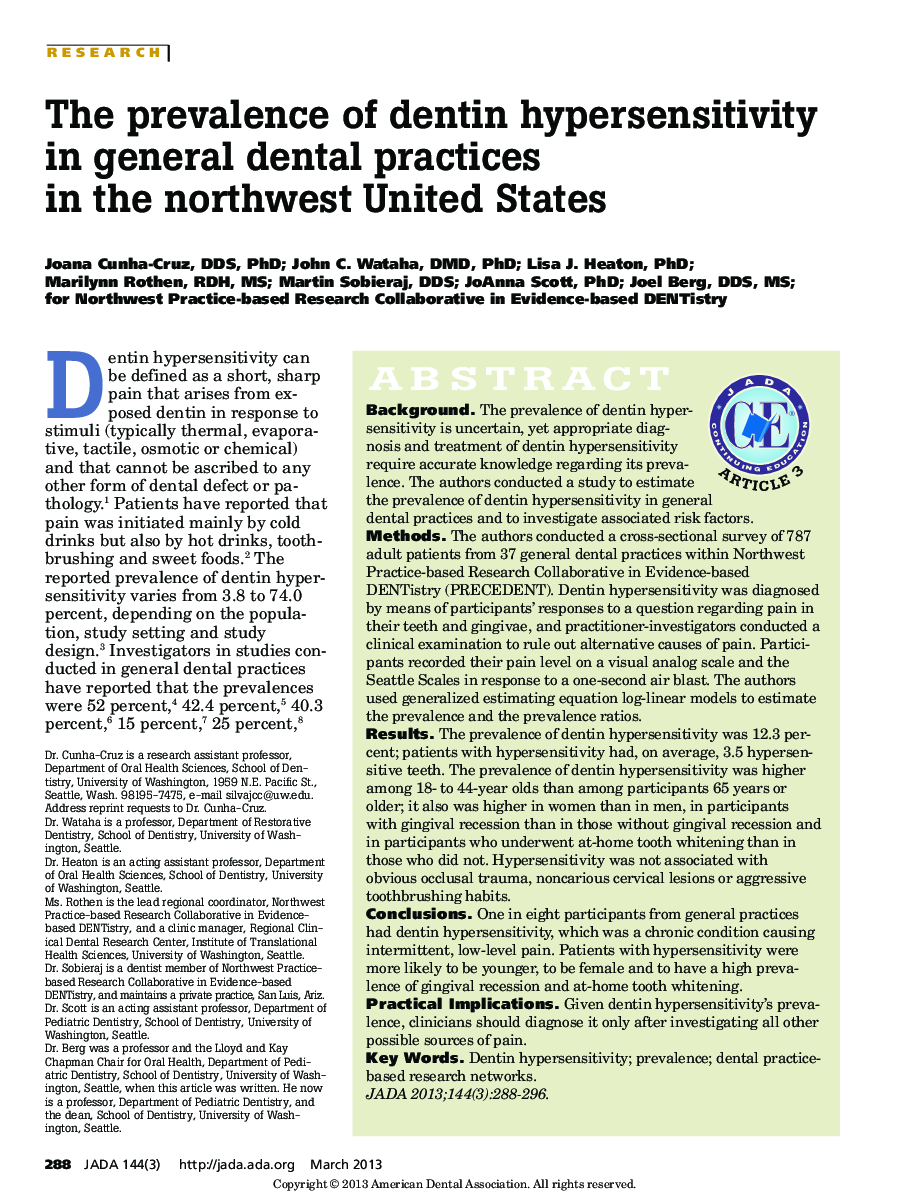| Article ID | Journal | Published Year | Pages | File Type |
|---|---|---|---|---|
| 3137329 | The Journal of the American Dental Association | 2013 | 9 Pages |
BackgroundThe prevalence of dentin hypersensitivity is uncertain, yet appropriate diagnosis and treatment of dentin hypersensitivity require accurate knowledge regarding its prevalence. The authors conducted a study to estimate the prevalence of dentin hypersensitivity in general dental practices and to investigate associated risk factors.MethodsThe authors conducted a cross-sectional survey of 787 adult patients from 37 general dental practices within Northwest Practice-based Research Collaborative in Evidence-based DENTistry (PRECEDENT). Dentin hypersensitivity was diagnosed by means of participants’ responses to a question regarding pain in their teeth and gingivae, and practitioner-investigators conducted a clinical examination to rule out alternative causes of pain. Participants recorded their pain level on a visual analog scale and the Seattle Scales in response to a one-second air blast. The authors used generalized estimating equation log-linear models to estimate the prevalence and the prevalence ratios.ResultsThe prevalence of dentin hypersensitivity was 12.3 percent; patients with hypersensitivity had, on average, 3.5 hypersensitive teeth. The prevalence of dentin hypersensitivity was higher among 18- to 44-year olds than among participants 65 years or older; it also was higher in women than in men, in participants with gingival recession than in those without gingival recession and in participants who underwent at-home tooth whitening than in those who did not. Hypersensitivity was not associated with obvious occlusal trauma, noncarious cervical lesions or aggressive toothbrushing habits.ConclusionsOne in eight participants from general practices had dentin hypersensitivity, which was a chronic condition causing intermittent, low-level pain. Patients with hypersensitivity were more likely to be younger, to be female and to have a high prevalence of gingival recession and at-home tooth whitening.Practical ImplicationsGiven dentin hypersensitivity’s prevalence, clinicians should diagnose it only after investigating all other possible sources of pain.
